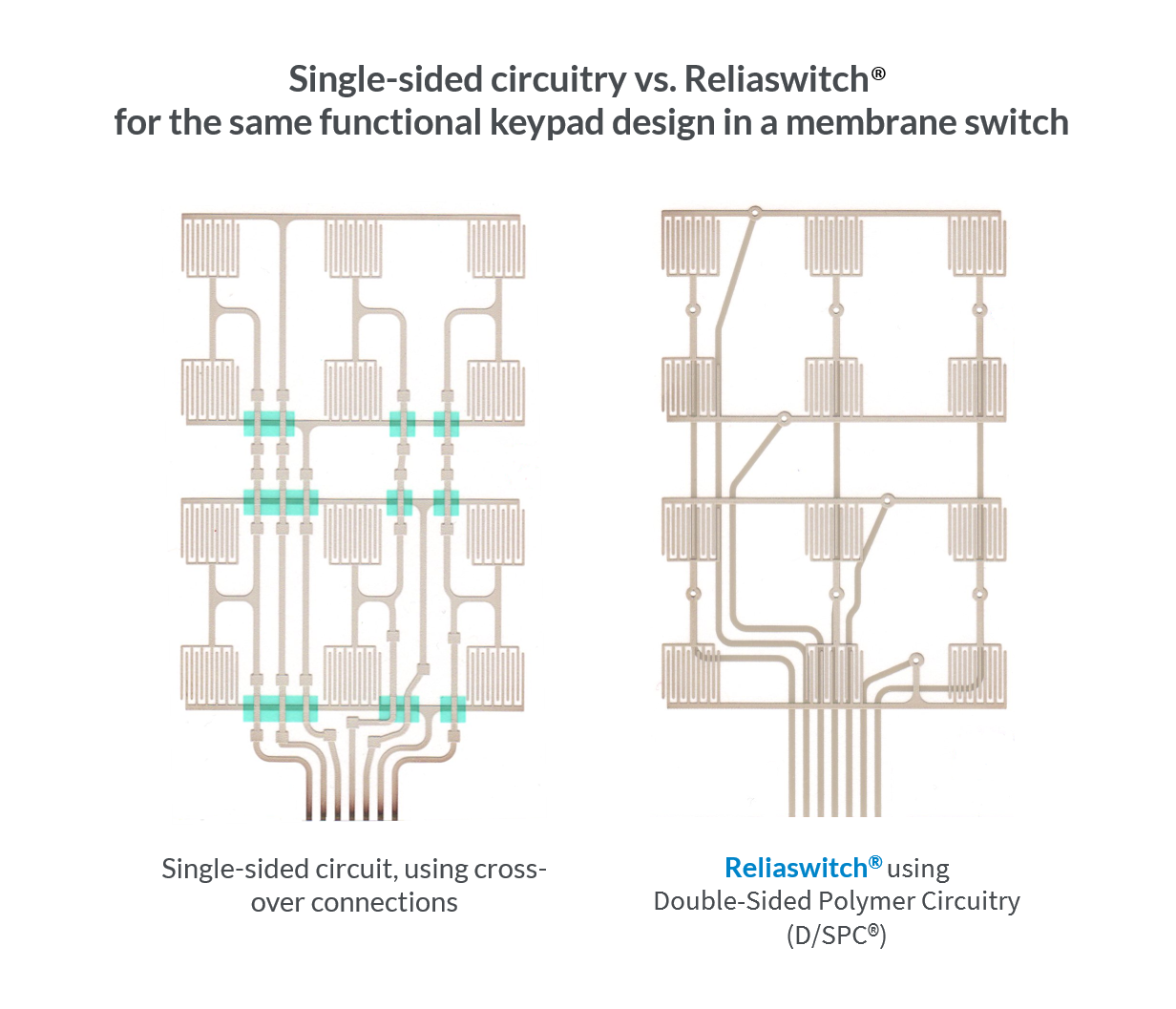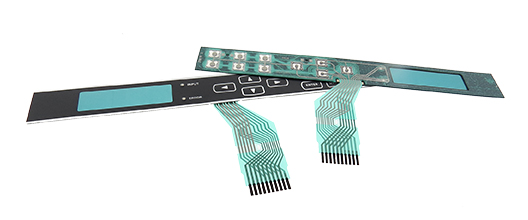Membrane switch in digital appliances: design considerations
Wiki Article
The Manufacturing Process Behind Membrane Layer Switch: What You Need to Know
The manufacturing process behind membrane switches over combines cautious style, material choice, and quality assurance. It starts with recognizing the intricacies of membrane switch design and advances via different stages, consisting of material choices and printing methods. Each stage plays an essential duty in making certain capability and sturdiness. The intricacies of layer building and construction and the rigorous testing criteria may disclose understandings that are not right away noticeable. What lies past these fundamental elements?Recognizing Membrane Layer Change Style
Membrane layer buttons might show up basic at very first look, their layout entails intricate factors to consider that guarantee capability and resilience. The design procedure starts with an extensive understanding of customer requirements, consisting of the user interface's designated application and environmental factors. Ergonomics is a crucial element, as the format must help with simplicity of use while ensuring that tactile responses fulfills customer expectations.Moreover, the layering of elements, such as graphic overlays, adhesive layers, and conductive traces, need to be specifically crafted. membrane switch. This layered configuration not just affects the switch's responsiveness however likewise affects its longevity. Interest is offered to the sealing strategies utilized to shield against wetness and dust, which can endanger performance. Furthermore, layout considerations extend to aesthetics, where color design and visual clarity enhance customer experience. Ultimately, the layout of membrane layer switches over equilibriums performance, user experience, and longevity, making sure that they satisfy the demands of different applications properlyMaterials Utilized in Membrane Switch Over Manufacturing
When choosing products for membrane switch production, it is vital to ponder both efficiency and durability. The primary products include polyester and polycarbonate films, which supply adaptability and strength. These movies are typically coated with sticky to assure correct bonding to substratums. Conductive inks, typically made up of silver or carbon, are essential for creating electric links within the switch, enabling for reliable operation.Additionally, a protective layer, such as a difficult coat, is frequently put on boost scrape resistance and long life. The choice of backing material, such as acrylic or foam, can considerably affect the switch's tactile feeling and overall individual experience. Moreover, numerous ecological aspects, including temperature and moisture, need to assist product choice to guarantee peak performance in specific applications. Inevitably, the right combination of products contributes to the membrane layer button's functionality and lifespan, making educated options essential for producers.The Printing Process: Creating Graphics and Text
The printing procedure in membrane layer button production plays a considerable duty in generating top notch graphics and text. Various graphic design methods are used to guarantee aesthetic appeal and functionality, while mindful ink selection methods are necessary for durability and performance. Understanding these components is basic for attaining ideal cause membrane layer button style.Graphic Design Techniques
Graphic design strategies play an essential function in the printing process of membrane switches, as they specify exactly how graphics and message will eventually show up on the end product. Efficient visuals layout includes the critical use of font styles, formats, and colors to improve readability and visual charm. Developers often make use of vector graphics for scalability, ensuring that pictures remain sharp at various sizes. Furthermore, focus to contrast and positioning is crucial, as it influences individual interaction and aesthetic top quality. The incorporation of branding aspects, such as logo designs, should be taken care of with like preserve brand name integrity. Generally, thoughtful graphic layout strategies contribute considerably to the performance and appearance of membrane switches, impacting individual experience and product efficiency.Ink Option Methods
Selecting the suitable ink is vital for attaining the wanted aesthetic quality and resilience in membrane layer button production. Numerous ink kinds are made use of, consisting of solvent-based, water-based, and UV-curable inks. Each type provides unique attributes, such as versatility, attachment, and resistance to ecological variables. Solvent-based inks are typically favored for their resilience and lively colors, while water-based inks are more eco pleasant but may have restrictions in attachment. UV-curable inks offer quick treating and robust efficiency. In addition, shade matching strategies guarantee that the chosen inks align with layout requirements. Eventually, the selection of ink have to think about variables such as application method, substrate compatibility, and end-use demands to attain remarkable lead to membrane layer switch graphics and text.Layer Building And Construction and Setting Up

Product Selection Refine
A mindful choice of materials is essential in the production procedure of membrane switches, as it straight influences performance and durability. The main products made use of consist of polyester, polycarbonate, and numerous conductive inks. Polyester is commonly favored for its exceptional resistance to chemicals and abrasion, making it ideal for harsh atmospheres. Polycarbonate, on the various other hand, offers premium clarity and impact resistance, which is advantageous for applications requiring visibility and effectiveness. Conductive inks, generally made up of silver or carbon, are essential for developing dependable visit this site electrical paths. Additionally, the choice of glue products impacts the total integrity of the switch - membrane switch. Examining variables such as ecological direct exposure, responsive feedback, and visual demands overviews producers in selecting the very best materials for their specific applicationsLayer Attachment Methods
Adhering layers in membrane button building is an essential process that guarantees functionality and longevity. Various adhesion methods are utilized to safeguard perfect bonding between layers, which generally consist of the usage of adhesives, warm, and pressure. Pressure-sensitive adhesives (PSAs) are frequently made use of for their simplicity of application and immediate bonding capabilities. Additionally, thermal bonding techniques can be applied, where heat is used to turn on glue residential or commercial properties, safeguarding a strong bond. The option of adhesion technique mainly relies on the products involved and the specific application requirements of the membrane layer switch. Proper placement and uniform application of adhesives are vital to stop issues, protecting the switch operates efficiently throughout its intended lifespan.Quality Assurance Steps
Ensuring quality assurance during the layer building and construction and setting up of membrane buttons is crucial for keeping performance and integrity. This process generally includes a number of important steps, consisting of thorough evaluations at each stage of manufacturing. Manufacturers utilize innovative testing methods, such as peel examinations and adhesion analyses, to verify the stability of layer bonds. In addition, aesthetic inspections are conducted to identify any kind of problems in printing or product variances. Environmental conditions, such as temperature level and moisture, are meticulously checked to assure excellent curing and bond. Routine calibration of tools aids keep precise manufacturing standards. By carrying out these quality assurance measures, manufacturers can greatly reduce the danger of product failure, guaranteeing that the last membrane layer switches fulfill the called for specs and client assumptions.Checking and High Quality Control Procedures

Innovations in Membrane Layer Switch Over Innovation
As improvements in modern technology remain to develop, membrane buttons are benefiting from cutting-edge advancements that boost their functionality and user experience. One noteworthy development is the combination of capacitive touch innovation, which enables even more receptive and user-friendly interface. This shift not only improves aesthetics however likewise reduces mechanical wear and tear, prolonging the life expectancy of the switches.Additionally, innovations in visuals overlay products have actually brought about boosted longevity and resistance to environmental elements such as moisture and UV light. These materials now provide boosted clarity and illumination, further raising the aesthetic appeal.Furthermore, the incorporation of clever technology is transforming membrane layer switches into interactive control board, enabling connectivity with IoT tools. This connectivity promotes a smooth customer experience, leading the way for applications in different sectors, from medical Check This Out care to consumer electronics. Jointly, these innovations position membrane layer switches over as crucial elements in modern-day tool design.Often Asked Concerns
The length of time Does the Membrane Switch Manufacturing Process Take?
The period of the membrane layer button manufacturing process can vary substantially. Variables such as intricacy, materials used, and production volume influence timelines, with common production ranging from a few days to a number of weeks for conclusion.What Are the Typical Applications for Membrane Layer Buttons?
Membrane layer buttons are frequently made use of in numerous sectors, consisting of auto controls, house devices, clinical tools, and customer electronic devices (membrane switch). Their convenience and durability make them ideal for applications requiring user-friendly interfaces and reliable efficiency in varied settingsCan Membrane Layer Changes Be Customized for Specific Needs?

What Is the Life expectancy of a Regular Membrane Layer Switch?
The life expectancy of a regular membrane layer switch varies, however normally, it varies from 1 to 5 million cycles. Variables such as use, environment, and material quality considerably affect longevity and total performance over time.

Are Membrane Layer Changes Eco-friendly?
The environmental friendliness of membrane switches differs. Some products made use of might not be recyclable, while others can be environment-friendly. The general effect depends on manufacturing products and methods, demanding cautious consideration during selection and disposal. The production process behind membrane layer switches over combines careful design, product choice, and high quality control. It begins with recognizing the ins and outs of membrane switch layout and advances through numerous phases, including product options and printing techniques. When picking products for membrane button manufacturing, it is important to ponder both performance and resilience. A mindful choice of materials is crucial in the manufacturing procedure of membrane buttons, as it directly affects performance and resilience. The selection of adhesion approach mostly depends on the products included and the details application demands of the membrane layer switch.Report this wiki page